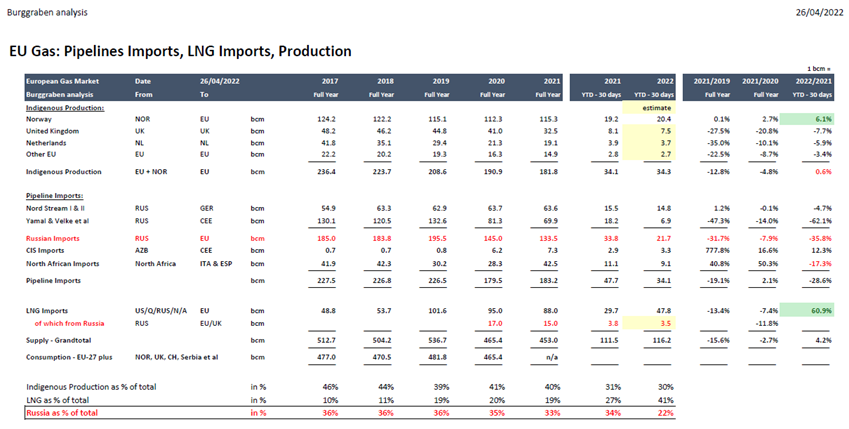
More observations on EU/US sanctions on Russia & possible implications on logistics disruption.
In April, India bought Russia crude for frist time ever. It bought 15mb in April according to news, altough we yet only measure 9mb as at 17 April 2022 through @Kayrros.
1/4
In April, India bought Russia crude for frist time ever. It bought 15mb in April according to news, altough we yet only measure 9mb as at 17 April 2022 through @Kayrros.
1/4

How much crude needs to be diverted to Asia if self-sanctioning (or EU ban) bites? At least 2.9mbpd of Russian Urals in EU (1.6-1.8mbpd seaborne; 1.3mbpd Druzhba pipeline system into the EU) need to be diverted. So far, seaborne loadings increased in March! Time will tell.
2/4
2/4

What does it mean to divert 1.8mbpd seaborne Urals away from Europe & into Asia? According to our calculation, it would increase ton-miles by a factor of 6 (!) & voyage time by a factor of 5 (!). In other words, Russian crude voyages will jump from 15 to 75 days on average.
3/4
3/4

Some more context below
3/4
3/4
https://twitter.com/BurggrabenH/status/1501173135286153221?s=20&t=UW4Qz7GSHpdnTcVgjYi-Iw
The shift to Asia already began: Flows of crude to Asian countries from Russia’s western ports have surged from zero in the weeks prior to the invasion to 875,000 barrels a day in the first full week of April.
#OOTT #tankers #Suezmax
#OOTT #tankers #Suezmax

• • •
Missing some Tweet in this thread? You can try to
force a refresh












